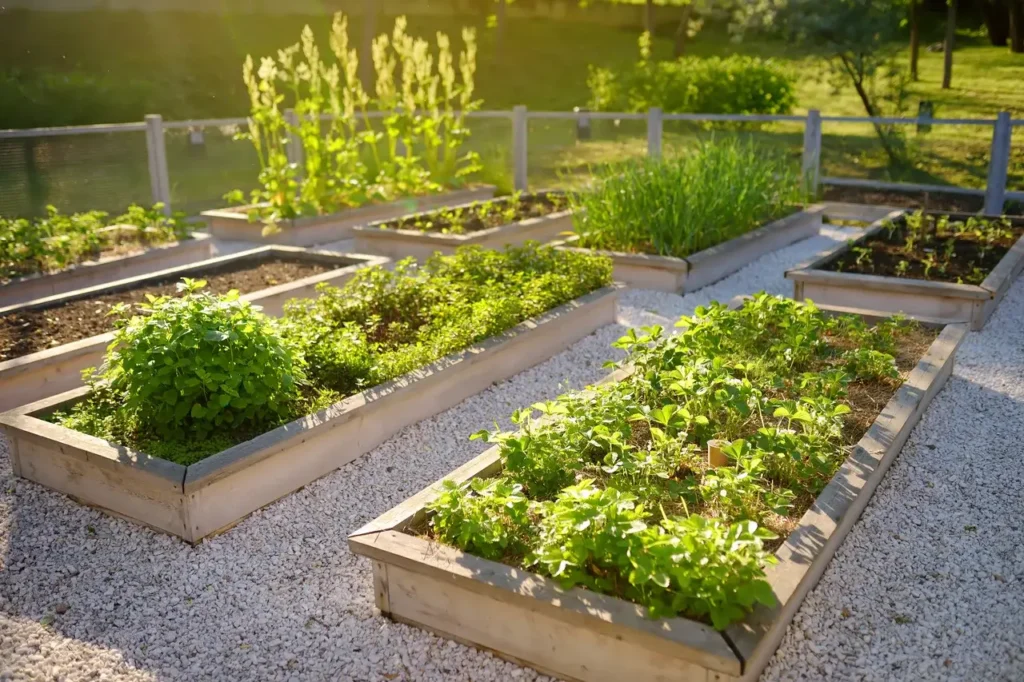
garden Maria Sbytova jpg.webp.webp
“My concern is that climate change is impacting agriculture and could well disrupt supply chains,” wrote Modern Farmer reader Taera Shuldberg. Shuldberg’s town of Sierra Vista, Arizona is working on a 10-year city plan—but Shuldberg had read the drafted plan and found it lacking.
“I was surprised and dismayed to find that climate change was barely mentioned except for the usual nostrums that pass for addressing the environment: water, recycling, reusing, and the like. I don’t think that food disruption is just a vague possibility, I think it is inevitable, and that communities should be preparing for it.”
Food security, at its core is, access to affordable, nutritious, culturally appropriate foods. It involves a high degree of choice—the freedom to pick between different options. Food insecurity is when that choice and that access are taken away. Moreover, food insecurity disproportionately affects traditionally underserved communities.
And the reader who wrote to us is correct: Climate change, and the more frequent and fierce natural disasters associated with climate change, are proven to increase food insecurity. It can disrupt access to food, or exacerbate existing inequalities. In June and July, Hurricane Beryl caused power outages for hundreds of thousands of people in Texas, resulting in widespread food spoilage. Months after the 2023 firestorm in Maui, thousands of people were still living in emergency shelter accommodations, relying on Red Cross meals and lacking the ability to cook their own food. In California, 2023’s catastrophic atmospheric rivers endangered the jobs of farmworkers, who already face high levels of food insecurity due to low wages and other factors.
And right now, communities in the American Southeast are dealing with the repercussions of Hurricane Helene.
There are a lot of independent organizations that address this intersection head-on. But how can people like our reader encourage their local governments to follow suit? Across the country, communities are addressing this question in different ways.
Palm Springs, CA
Four hundred and fifty miles away from Sierra Vista, California’s Palm Springs is a city of a similar size, with around 45,000 people. Heat and drought are top concerns in this desert town. Palm Springs has a Sustainability Plan, meant to inform future planning in the city, that directly mentions food security along with renewable energy, water conservation, and more. While Palm Springs has a reputation as a vacation destination, the income disparities in the Coachella Valley are some of the highest in the state. Christian Wheeler, climate and sustainability specialist for the city of Palm Springs, says that there is food insecurity in Palm Springs.
“Already in the city, we have a road and, below the road, there’s a lot of grocery stores, but above it, there’s not really any grocery stores,” says Wheeler. “So, [the city] already knew that there was inequitable access to food in general, and then climate change is not going to help that.”
learn more
C40 Cities are cities around the world that are addressing climate change in innovative ways.
Food deserts—areas without access to affordable and nutritious food—demonstrate that there doesn’t need to be a specific weather event for climate change to impact food security. Having to travel further to the grocery store can quickly become unsafe in extreme heat if you don’t have access to a car. And in Palm Springs, where temperatures regularly reach above 100 degrees Fahrenheit, heat exposure is a big concern.
Palm Springs doesn’t grow or produce its own food. One of the things the city is looking into is how to incentivize more local food growth through zoning.
“We are currently in the process of updating our zoning code,” says Wheeler. “You can incentivize this through landscaping requirements…dedicated to edible food, herbs and different things like that. You can also zone for urban agriculture, because in some cities, it’s a little bit hard with the zoning—it’s not really made for someone to do farming in the middle of the city.”
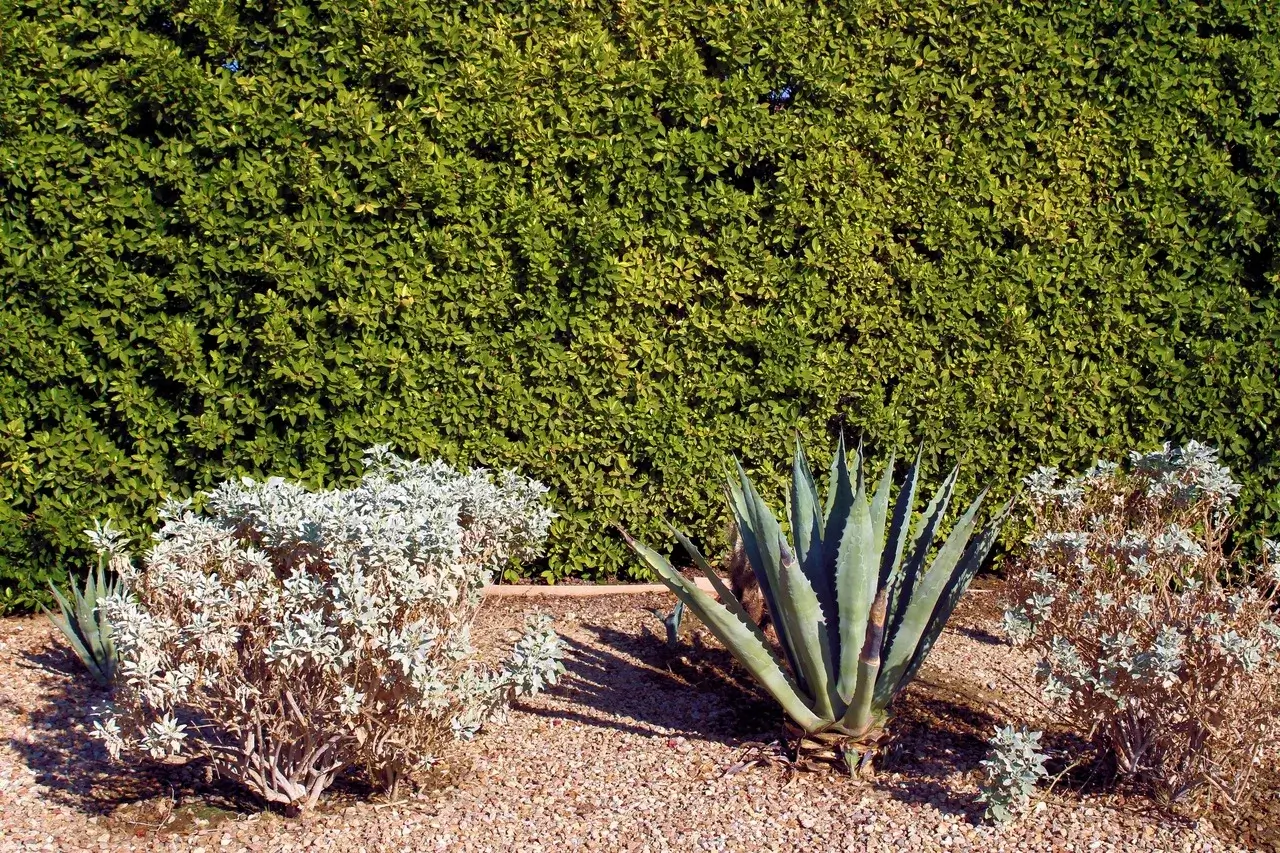
This is replicable in other places, says Wheeler. Most cities have some kind of landscape requirements; it’s just about gearing them toward food production. Updating those existing requirements with edible food requisites could be one way to get more food closer to home.
They are also expanding their community gardens. Being a smaller city, one of the challenges is just getting the word out.
“Since we’re a smaller city, we don’t necessarily have community organizations that are focused on urban agriculture, so we kind of have to do our own outreach,” says Wheeler.
take action
The Asheville Citizen Times has ideas for how people can help communities affected by Hurricane Helene.
Phoenix, AZ
Phoenix is in the same state as Sierra Vista, but it is a major metropolitan area. When writing its Food Action Plan, published in early 2020 with the goal of making healthy food available for all, it made a GIS map of food deserts. This made it easy to show council members vulnerabilities in their districts.
“As we start to roll out programs, we really start to look at food desert areas,” says Rosanne Albright, environmental programs manager for the City of Phoenix.
Phoenix has a climate action plan that uses items from its food action plan. In Phoenix, climate threats include heat and strain on water. Around a third of the city gets its water from the Colorado River, a dwindling water source.
The food security part of this plan aims to increase local food production—on rural farms, city farms, backyard gardens and community gardens.
“We also knew that our local farmers really are some of the best in the country, because they know how to farm given our extreme heat and our water situation. So, that alone let us know that if we could increase that we’re not only going to reduce greenhouse gas emissions, but we’re going to be able to provide more food, healthier food, all of those things all at once.”
learn more
Check out Lancet Countdown’s Adaptive Actions for Communities and Organizations
Another facet of this plan focuses on the distribution side—getting local food into the local market. This is challenging because farmers can’t sell their products locally if those pathways are not already established.
“That distribution can go to it staying here, rather than getting exported elsewhere and reduce the need for us to import food here,” says Albright.
Many of Phoenix’s food programming got put on the spot immediately. Right after the plan was approved in early 2020, the COVID-19 pandemic began. As cities began receiving disaster funding, many struggled to know how to use it most effectively. Phoenix began plugging it into the food programs it had just developed.
“We were able to go beyond just providing funding to food banks, [and] really creating this network,” says Albright.
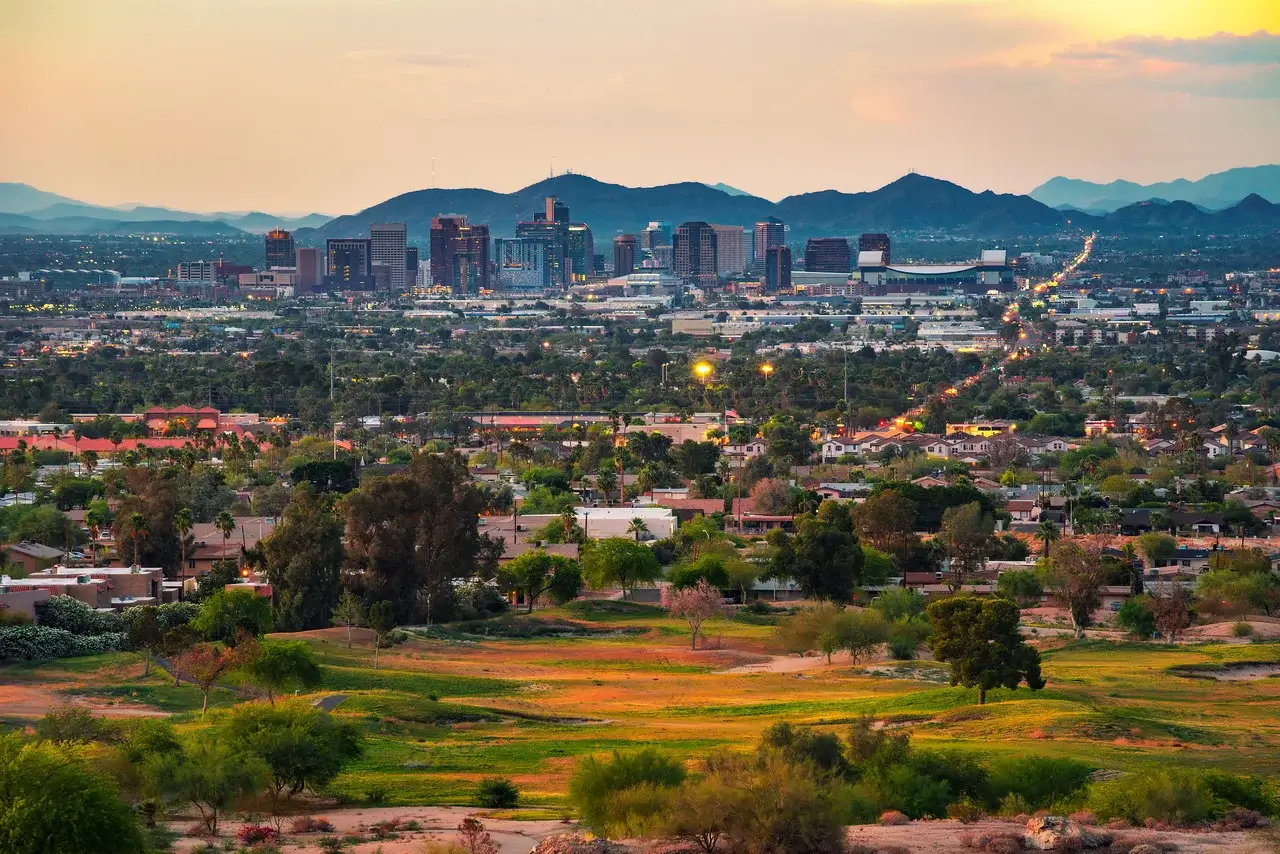
The network proved to be very useful, because it allowed people in the food system to have a direct government ear to let officials know when something was impeding the path to a more resilient local food system. Producers that wanted to try innovative things to bolster local food production such as vertical farming, growing in storage containers and more were hitting permitting roadblocks. It was through this network that they learned about critical gaps in zoning code. In the next year, they’re hoping to have some of these zoning amendments addressed.
“Our zoning codes did not have all the current definitions of agriculture,” says Albright. “They don’t consider solar panels. There’s lots of things that we didn’t even know about. And now we do because we have that pipeline directly to those farmers. So, that network, we’ve learned, is really important.”
Ashland, OR
Ashland, a city near the border of Oregon and California, has seen the linkage between climate change and food security play out in recent memory. In 2020, the Almeda fire burned more than 3,000 acres, forcing evacuations from the surrounding area and destroying more than 2,500 homes.
Published in 2017, the Ashland Climate & Energy Action Plan lacks measurable food security goals, says Bryan Sohl, who served on the committee that wrote the plan. But after the fires occurred, food security conversations have changed in Ashland and the surrounding areas.
Rogue Food Unites, a nonprofit organization, was formed during the fires. Although it began responding to the direct need for immediate relief, it has expanded its programming to include things that can increase local food security, such as a mobile free farmers market, where insecure families can access fresh food, and creating freeze-dried ready-to-eat meals for disaster preparedness.
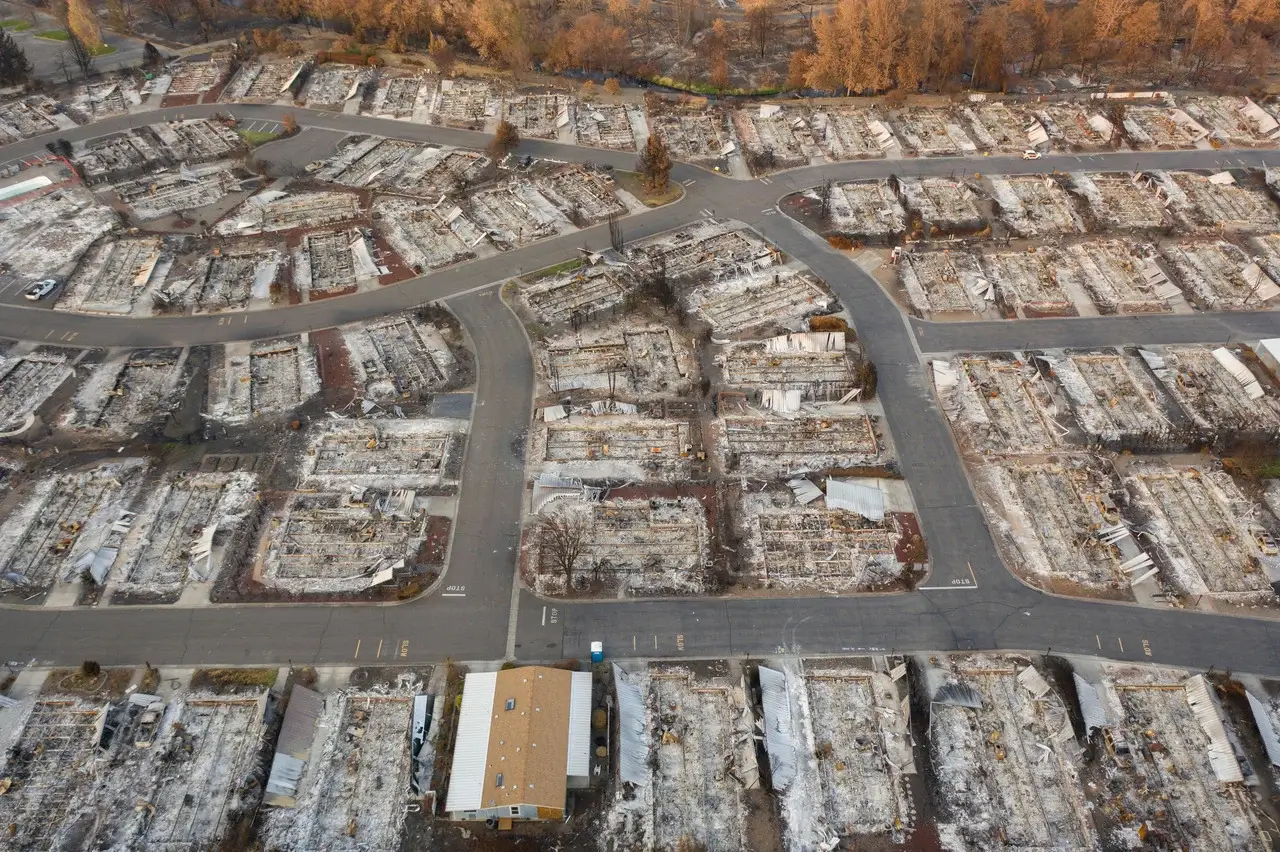
When the Almeda fire happened, Stu O’Neill’s house became a drop site for donations. In the years since, he’s joined Rogue Food Unites as chief financial officer. The connections the group has formed locally—with farmers, restaurants, and food-insecure individuals—poise Rogue Food Unites to best serve the community in future crises.
“And yet, we know, because of climate change and how things are happening in our communities, and the impacts of climate change for us, it’s kind of a matter of when, not if, and we hope to be strong and ready and have our community stronger and more ready to respond the next time something bad happens,” says O’Neill. “We really do feel that the resilience of being able to respond to future disasters comes from having a strong local food system.”
Now, Rogue Food Unites is working on creating a replicable blueprint of its work, so that others can put it into action in their communities.
“We’ve been talking to a number of different communities around Oregon who are interested in replicating our market model in their community,” says O’Neill. “We’re really interested in seeing more communities adopt this sort of food insecurity initiative.”
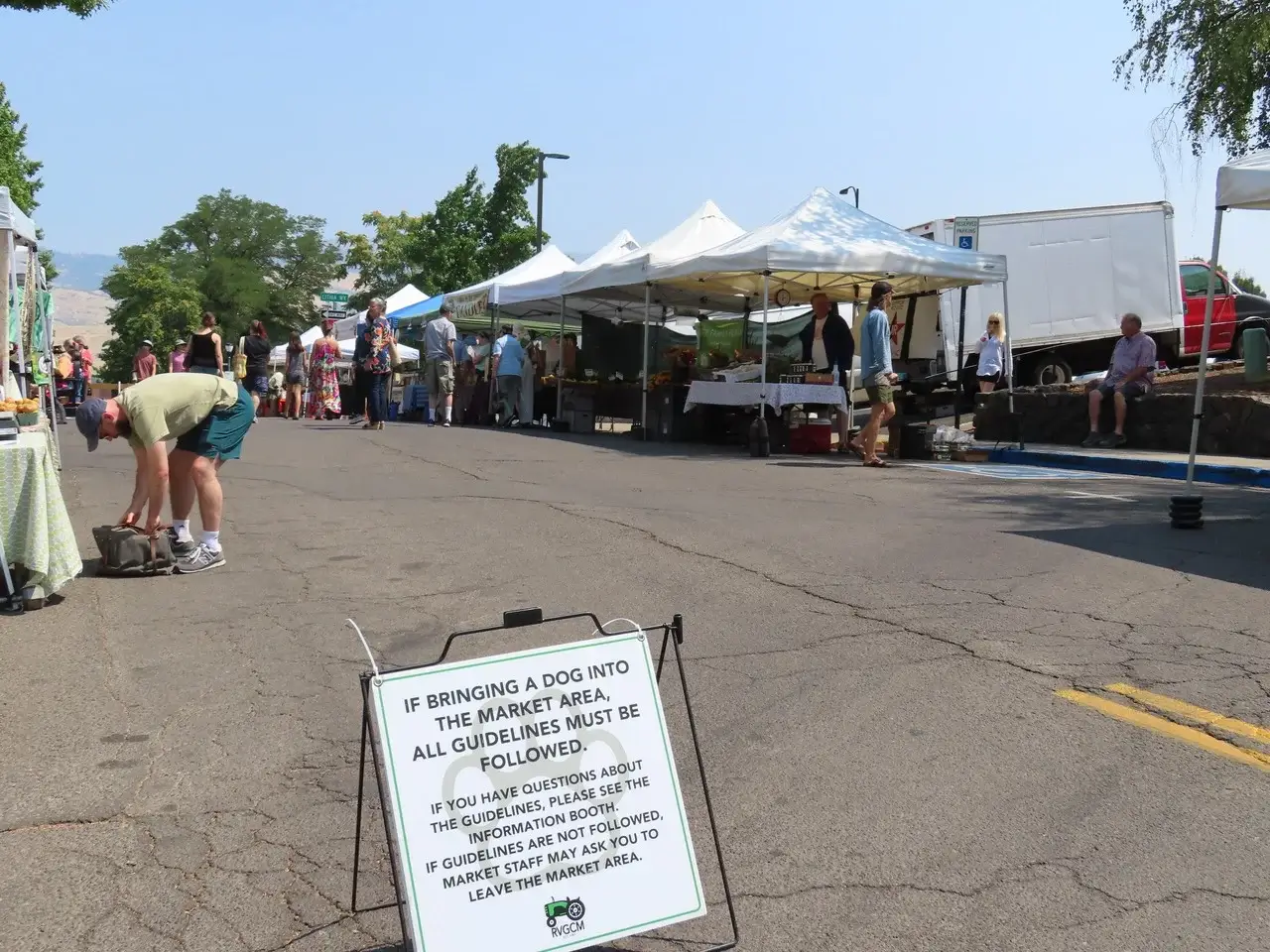
As for folks who want their city’s plan to reflect the relationship between food security and climate change more explicitly, bringing food security to the attention of officials is helpful.
“Coming up in the mid [to] late fall, we’ll be doing our annual work plan for our committee,” says Sohl. “And I think one thing to bring back to my committee is like, hey, what are we doing about food security?”
In Your Community
While there are many great independent organizations doing work around food security and climate change, you can also encourage your local government representatives to address the issue. Many city government meetings are open to the public, either in person or on Zoom, and will accept written or spoken public comments. Based on the perspectives in this article, here are some questions to bring with you for a starting point:
-What is our city doing to plan for climate change-induced food insecurity?
-Does the zoning in our city encourage local food production? Or does it actively inhibit it? How?
-Who is doing food security work in our area?
-Where are the food deserts located in our community? How is our city working to address these accessibility issues?
How is your community planning for climate-induced or exacerbated food insecurity? Let us know in the comments.
Source link
2024-10-09 08:00:35
Karl Hoffman is a distinguished agriculturalist with over four decades of experience in sustainable farming practices. He holds a Ph.D. in Agronomy from Cornell University and has made significant contributions as a professor at Iowa State University. Hoffman’s groundbreaking research on integrated pest management and soil health has revolutionized modern agriculture. As a respected farm journalist, his column “Field Notes with Karl Hoffman” and his blog “The Modern Farmer” provide insightful, practical advice to a global audience. Hoffman’s work with the USDA and the United Nations FAO has enhanced food security worldwide. His awards include the USDA’s Distinguished Service Award and the World Food Prize, reflecting his profound impact on agriculture and sustainability.





